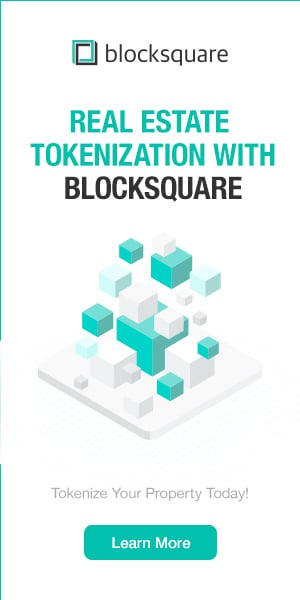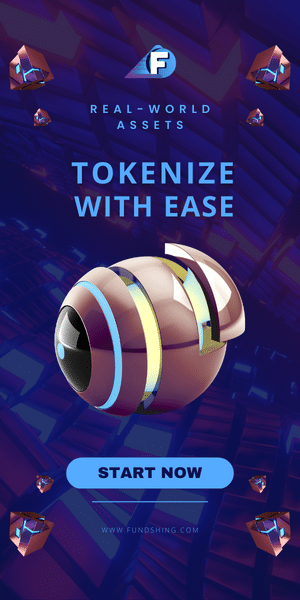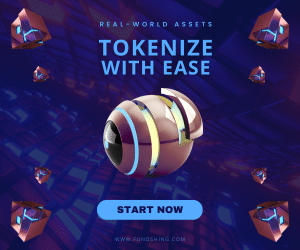An interview with founder and CEO of SuperRare, John Crain
John Crain is the founder of SuperRare. SuperRare is a social marketplace for digital collectables. SuperRare is enabling artists to register their artwork on the Ethereum blockchain and showcase them to the world. The digital artworks are recorded at the blockchain as ERC-721 non-fungible tokens. In the following interview, John Crain explains why he started SuperRare, how it works and what he sees in the near future for the platform.
Jonas Kasper Jensen (JKJ): Why did you make SuperRare and what problem did you want to solve when you made it?
John Crain (JC): I got interested in Ethereum, and I wanted to build new business models for the web. Social platforms like YouTube and Instagram capture most of the value themselves. They have great distribution, but it’s the platforms that are really benefitting and not the creative people who make the platforms successful.
That was in the back of my mind as I was interacting with the crypto ecosystem in general and especially the non-fungible token standard and all the cool work that’s being done around that. I was like, maybe we can build something super fun and engaging while changing the business model to one centred around a marketplace.
JKJ: What is your business model then – if not earning money on ads? Right now, on Superrare, the only fees you pay is when you are using the Ethereum blockchain to finalize sales of artworks and when artists upload new works on the chain.

JC: That’s correct. We’re calling the current version of SuperRare our beta smart contracts. In the next couple of months, we’re going to upgrade. Moving forward, we will charge 15% on primary market sales and then split the secondary market sale with the artist, so that we still give the artist royalties on secondary markets.
JKJ: Do you see yourself as a gallery or more like an infrastructure? Or where would you place SuperRare in this whole digital art market realm?
JC: We’re a little bit of a gallery. But that wasn’t really what we intended. I think of us as a platform and a toolset for creatives. Right now, while we are still in the beta period of the project, we are screening artists to make sure they’re producing genuine original works. So, in that sense, we are like a gallery. But we’re also not a gallery in the sense that once people join, they’re free to do whatever they want. We don’t dictate what they can post and how often they can post.
JKJ: In the future, will you be more like a social media where everybody can join?
JC: That’s a good question. It’s one that we haven’t totally answered our self. I think the concepts of community governance is cool. But it’s still really complicated, and it’s hard to get people to participate. We’d love to have SuperRare to be much more community-governed. We’re trying to strike that balance between a gallery and an open platform, so it’s an ongoing dialogue with the members of the community.
JKJ: In the art world, you have all these gatekeepers like curators and gallerists. How do you envision that SuperRare will handle the curation of works of art?
JC: As SuperRare grows, I think that people will start curating collections of work that other people can look at because as the body of work grows, it does get harder to filter and sort. We will keep the platform pretty open so that anyone can join. But then some people are really good at curating, and they will help other people locate the artworks that they find interesting.
JKJ: So, the act of curating will become this powerful tool for making sure that some artists will make it on the platform, and some won’t because nobody will buy their work?
JC: I mean, I don’t know that they won’t make it because nobody will buy it if it doesn’t get curated. I think the nice thing about these big platforms is that you can find much smaller micro-communities. It’s not like the work must be curated by MoMA to be valuable.
JKJ: Is SuperRare built on the ERC-721 non-fungible standard?
JC: Yes, that’s correct. Although we launched before the standard was finalized, so there are some differences between our contract and the final standard.
JKJ: One thing that I have noticed while being a user of SuperRare is that if you want to buy an artwork, you don’t have to offer the exact amount that the artists ask for the work, and also that all works are for sale all the time. Why is SuperRare built around this concept?
JC: Partially, we wanted people to be able to sell their work, but one of the interesting things about these crypto-native assets, is that everybody can go and look at them all the time. You don’t even need to list something for sale; you can just offer somebody something. I thought this was just a cool idea. For something to be for sale on eBay, you must put it up; somebody must create the post for you to know it exists.
With Ethereum, everybody can look at everything, all the data is open. It’s sort of a part of Web 3, the decentralized web, or whatever you’d like to call it. At SuperRare we thought it would be cool if anybody at any time could place an offer on any artwork even if the artist hadn’t thought about selling it. They can do that now because we have this open data.
JKJ: So, you wouldn’t even need to build something around it, because all the history is recorded into the Ethereum blockchain?
JC: Yeah, exactly; it’s sort of like a new way to think about commerce.
JKJ: Right now, it is only possible to pay for artworks with ether. Are you planning to open up for other payment options?
JC: Yes. I think about SuperRare as a great way to get people on-boarded and start thinking about crypto assets. And we’d like to make it possible to use a wide range of payment methods.
JKJ: What if two artists want to swap artworks?
JC: Sure, that’s a request we get pretty often. Letting people sort of trade works. That’s something that will happen within the next six months.
JKJ: What are your future plans for SuperRare?
JC: One thing is that as a collector, you want to enjoy your collection in the best way possible. So, we are experimenting with a couple of 3D world crypto projects that enable people to show off the pieces of art that they have collected.
With art, you want to arrive at a piece of work, spend some time thinking about it. See how it affects you over the course of a few minutes, or maybe even longer. And we want to enable people to walk around in a 3D world exploring their collection and maybe let people build their own galleries to display the work and arrange it however they’d like.
JKJ: And you can do that because the 3D world is already registered on the blockchain so you can just import the wallet address that holds the artworks into the 3D world?
JC: Yes, a lot of these worlds are integrating with the Ethereum blockchain, and to log in, you need a wallet for Ethereum.
JKJ: Is it also possible to present three-dimensional sculptures in one of these 3D worlds?
JC: The NFT standard is super flexible, so you can use whatever type of file you’d like. So, we’re going to add support for 3D objects that can get rendered in these worlds – sculptures are going to be super cool because you can zoom in and twist them around and look at them in a way that you can’t really do with physical sculptures.
JKJ: How do you think that non-fungible tokens will impact art and art production going forward?
JC: I think in general for the art, it’s going to help fuel growth of people experimenting with digital art. A lot of art that’s bought and sold is still sculptures and canvas. And part of the reason is that without a tool like non-fungible tokens, there’s not really something you can take to market that can potentially accrue value. And I see it as a pretty fundamental shift that the non-fungible tokens introduce the possibility to prove that a digital object is original.
People debate whether something like that could accrue value. But I think just the fact that it exists, the possibility to prove that there is only one digital artwork and that you could prove it’s a unique object signed by the artist is a pretty big deal. I think this is going to fuel a digital art revolution.
More about SuperRare
- Check out SuperRare and start collecting!
- Join the Telegram
- Follow SuperRare on Twitter & Instagram
- Submit art to the network
More Articles:
Driving the industry of tokenization – PART ONE
SMART VALOR rolls out staking-as-a-service
You Might also Like
























